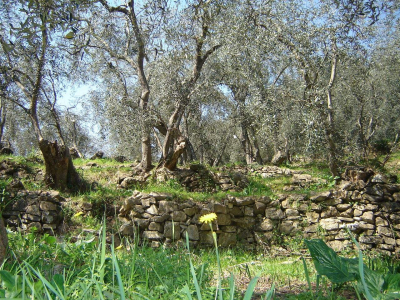Olive oil performance in 2016/17 and olive oil and table olive estimates for 2017/18

Olive oil: provisional data for 2016/17
The meeting of the IOC Statistics Working Group was held on 29 September 2017. According to the provisional data provided by the countries, global production in the 2016/17 crop year is set to reach 2 538 000 t, for a 20% decrease, down by 631 500 t compared to the previous crop year; consumption stands at around 2 740 000 t (-9%); imports and exports are coming in at 799 000 t and 798 500 t respectively. The member countries of the IOC produce a total of 2 349 500 t, which are 93% of total world production for 2016/17. EU countries as a whole accounted for 1 744 500 t, which is a 25% decrease for the group. In Spain production at 1 283 600 t dropped by 8.5%, followed by Greece with 195 000 t (-39%), Italy with 182 300 t (-62%) and Portugal with 69 400 t (-36%). In the other IOC member countries, production decreased overall by 8% with a total of 605 000 t, with Turkey heading the group with 177 000 t, reporting a 24% increase, followed by 110 000 t in Morocco (-15%), 100 000 t in Tunisia (-29%), 63 000 t in Algeria (-23%), while the remaining countries report a total of 155 000 t. Consumption in IOC member countries totalled 1 926 500 t, which is an 11% year-on-year decrease. In other non-member countries, consumption is set to come in at around 813 500 t for a 2% year-on-year decrease.
Olive oil: estimates 2017/18
According to the official country data and the estimates of the IOC Executive Secretariat, world production in 2017/18 is estimated at around 2 854 000 t, which would be an increase of approximately 12% compared to the previous year. Consumption is expected at 2 889 000 t for a 5% year-on-year increase. Imports and exports are expected to exceed 830 000 t respectively.
At this point in the year it is still too early to judge the accuracy of these estimates and the figures that the Council of Members will examine at the end of November will be more solid, unless exceptional weather conditions intervene. The IOC member countries as a whole estimate a production of 2 677 000 t, which would be 94% of the total worldwide for the 2017/18 crop year, and which would be a 14% year-on-year increase. The forecast for EU producing member countries indicates an output of 1 896 000 t with Spain in the lead with up to 1 150 000 t, 10% lower than the previous year, followed by Italy with 320 000 t (+75%), Greece with 300 000 t (+54%) and Portugal with 110 000 t (+58%). It should be noted that Portugal will achieve a crop year record on the back of the new plantations in 2003/04, predominantly in the Alentejo region, and which we referred to in Newsletter No. 114.
Output in other IOC member countries is forecast at 781 000 t, for a year-on-year increase of 176 000 t (+29%). Within this group of countries, Tunisia expects to harvest 220 000 t, which would be a 120% increase, followed by Turkey with a forecast 180 000 t (+2%), Morocco with 120 000 t (+9%), Algeria with 80 000 t (+27%), Argentina with 37 500 t (+74%), Jordan and Egypt with 25 000 t respectively, which in both cases would be a 25% increase, while output is expected to remain stable or decrease slightly in other member countries.
World consumption could reach 2 889 000 t, which would be a 5% increase compared to the previous crop year. Upcoming Newsletters will provide further information regarding the forecasts for this crop year.
Tableolives -estimates2017/18
World production for the 2017/18 crop year is estimated at 2 951 500 t. If this tonnage is confirmed, it would be a record figure, up by 3% or 88 500 t from the previous season. This increase in production is driven by good harvests in certain IOC member countries such as Egypt, which expects to produce 650 000 t, up by 30% compared to the previous crop year, Turkey with 450 000 t (+4%), Greece with 235 000 t (+31%), Morocco with 120 000 t (+9%), Argentina with 105 000 t (+10%), Jordan with 35 000 t (+52%) and Tunisia with 28 000 t (+27%). A decrease of 5% is however forecast in Spain and of 20% in Algeria, while production in the other member countries should remain steady or decrease slightly. Consumption is expected to remain at the same level as the previous crop year.
Photo by Luigi Caricato
To comment you have to register
If you're already registered you can click here to access your account
or click here to create a new account


Comment this news